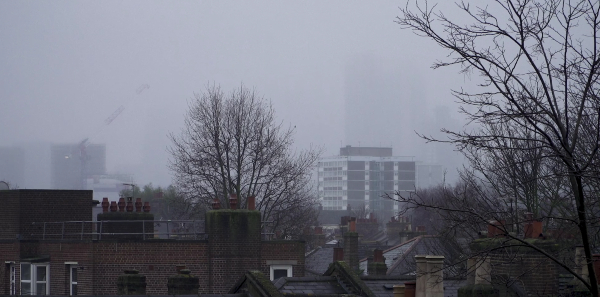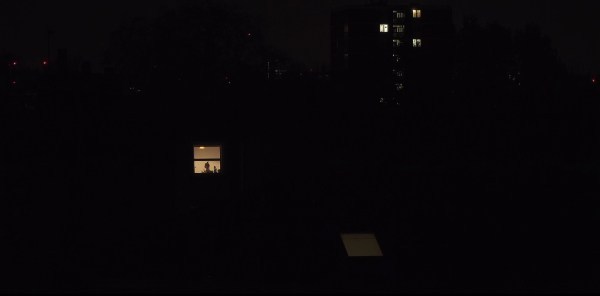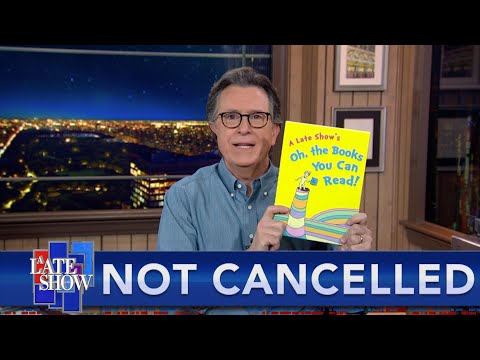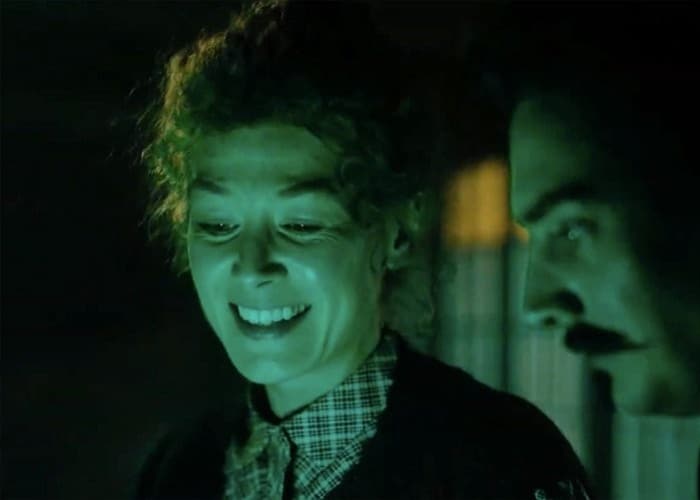CITADEL: London In Lockdown
John Smith’s Citadel perfectly captures the United Kingdom’s 2020. Beginning with a boisterous Boris Johnson, still bouncing from his general election win, and ending with the worst COVID-19 death toll in Europe.
The story of the country’s battle with the Coronavirus pandemic is told both visually, with shots of the capital’s skyline and buildings, but also through the words of the prime minster. Smith seamlessly pinpoints vital statements that Boris Johnson made, setting them against powerful shots from his window.

Beginning in February, Citadel’s opening presents a misty view of London, as Johnson uses Superman metaphors when describing his approach to the virus. The Prime Minister’s words explain his vision for Britain to be a “supercharged champion” of opposition to any restriction of the market’s ability to “buy and sell”. This last phrase is repeated several times after by the filmmaker, as the mist flashes in and out of the frame. Smith matches Johnson’s words with the revealing of London’s skyscrapers.
This presents the government’s first reaction to the emerging health crisis in 2020, protecting big business. Smith appears to criticise this, with his use of quick cuts and unconventional editing that flashes the tall buildings into frame as Johnson says “buy”, and hides them behind the mist when he says “sell”. They will take, but not give back. This is certainly a concept that has been highlighted during the pandemic.
Lockdown Gloom
After the country’s leaders realised that the COVID-19 pandemic was going to be a huge issue for the country, the United Kingdom entered lockdown in March 2020. The bleak, dark, and lonely nature of the months that followed are expertly represented by the following sequences of Citadel.
The film documents London’s transition into lockdown, moving from shots of the city as a whole to individual houses and back gardens. In an interview with bfi.org.uk, Smith explains the way in which he wanted to “capture the melancholy of watching people through their windows, a kind of moroseness in their postures and actions”. This is something he carries off very well. The shots of people washing up, exercising, and going about their daily business alone present the restrictive and lonely nature of the lockdown. Filming these shots at night only adds to the effect of the gloom and claustrophobia too, as locked down citizens are trapped in the darkness.

These powerful sequences are book-ended by Johnson first implementing, and then easing the UK’s lockdown restrictions in May 2020. Once again phrases from Johnson’s lockdown easing broadcast are used symbolically by the filmmaker. Repetitions of “you should go to work” and “get to work” are placed over shots of people’s lights flashing on in the darkness, representing the attitude of the government after the end of the first lockdown. People were told in no uncertain terms that they needed to get to work for the sake of our economic prosperity and security, no matter if this risked the second wave of virus infections. This philosophy is something that Smith seems to be criticising with this sequence in Citadel.
The Winter Lockdown
We then return to shots of London in the daytime, once again seeing the whole of the London skyline. However, although this sequence begins in the summer, we quickly cut to a winter, snowy London, with the big buildings once again hidden in the mist. This is the beginning of the second lockdown, as once again the UK returned home to slow down the rate of infections. Sounds of construction work over the top of these snowy shots could be Smith commenting on the class injustices and imbalance that the COVID pandemic has presented. Whilst big business is hidden in the mist, and out of view, people with manual and generally less well-paid jobs still had to continue. They were not able to quarantine, or put their family’s health before their job.

This is something that Smith acknowledges in his BFI interview, describing how “builders, like so many others, have been encouraged or forced to risk working throughout the pandemic, as can be seen from the shifting positions of the cranes on the Emerald City’s skyline. This is just one example of the contrast between Johnson’s out-of-touch and privileged optimism and the reality of the hardship that half of the population are enduring, with many having the sole option of going to work or going hungry.”
Pandemic Filmmaking
Another way in which Smith’s Citadel is interesting is the way in which despite lockdown restrictions, it is still able to accurately and truthfully represent the story of the UK’s 2020. It shows how creative filmmaking is able to withstand any challenge or restriction. A large amount of avant-garde and experimental filmmaking is about challenging and criticising those in power and presenting the impact of their decisions and actions. However, what’s interesting about Citadel is that it is a film that is directly affected by the events of 2020. The filmmaker himself was trapped in his home during the lockdowns. Therefore, this is not a film that is expressing a view of life during the pandemic, constructed by a writer, director, and editor, it is a film that in itself was restricted by the very crisis that is its subject.
Summary
Overall, John Smith’s Citadel is a perfect cinematic reflection of the difficult 2020 that the British public dealt with. From Johnson’s contradictions and lockdown decisions to the harshness and gloom of multiple lockdowns.
What did you think of Citadel? Let us know in the comments below!
Watch Citadel
Does content like this matter to you?
Become a Member and support film journalism. Unlock access to all of Film Inquiry`s great articles. Join a community of like-minded readers who are passionate about cinema – get access to our private members Network, give back to independent filmmakers, and more.
Join now!





